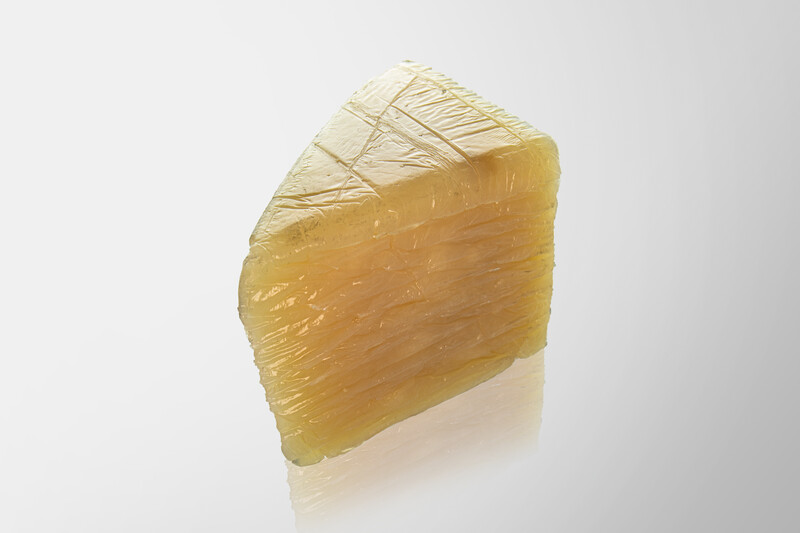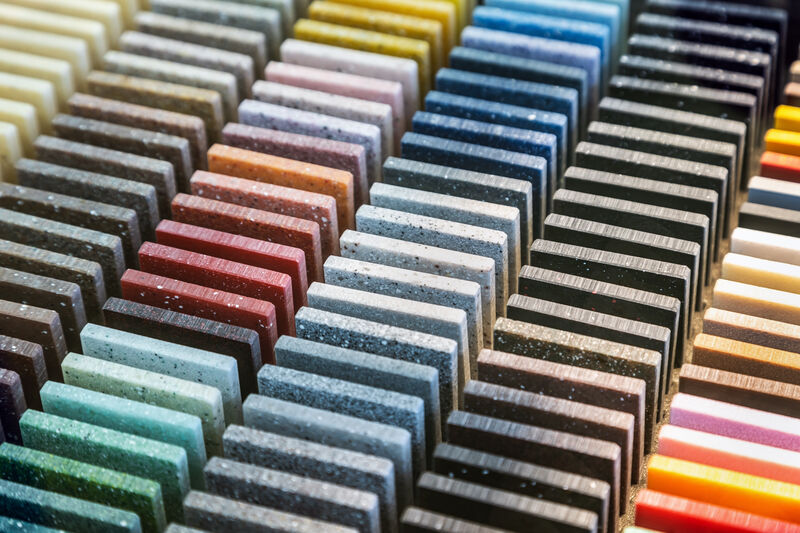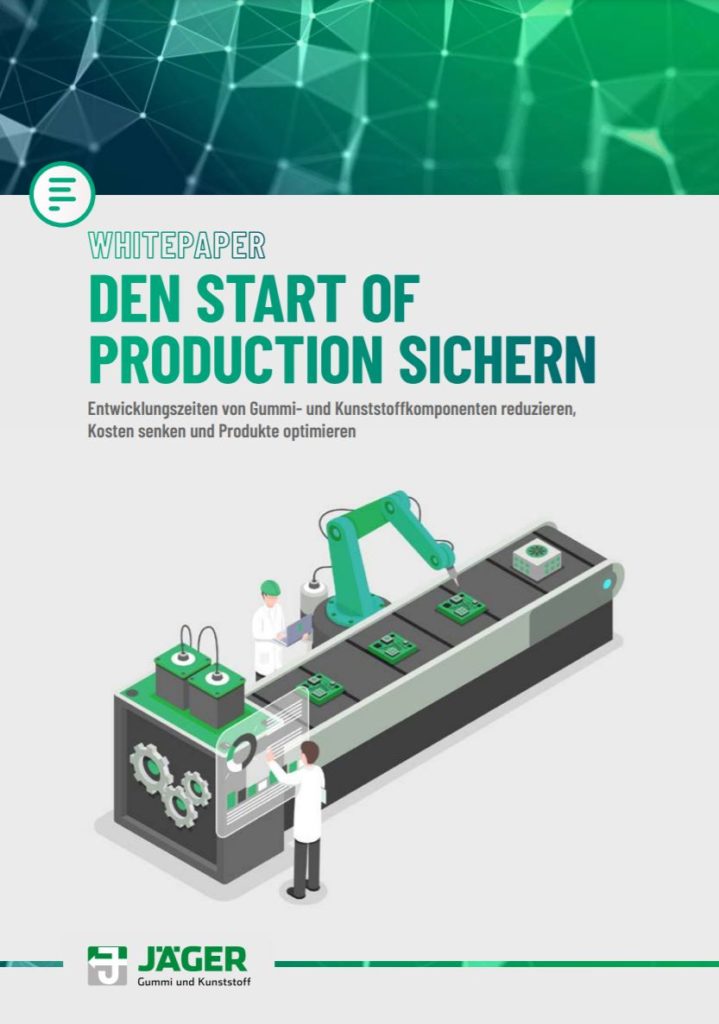
JÄGER Business Blog



WHITEPAPER
Find out which factors influence your SOP!
Some plastics are not recognizable as plastics at first glance. Their appearance and properties are similar to those of other materials, which makes them attractive for numerous applications. These include acrylic stone, a solid surface material whose aesthetics are reminiscent of ceramics and have comparable characteristics. For interior construction, especially in the kitchen and bathroom, acrylic stone is a favorable alternative to ceramics, with some special advantages.
Chemically, acrylic stone is a composite material made of polymethyl methacrylate (PMMA or acrylic) and mineral dust. The minerals are embedded in a PMMA matrix as filler, which gives the material high strength, similar to fiber composites. Acrylic stone has high hardness and abrasion resistance, is non-porous and does not absorb liquids, so it is easily washable.
The properties of acrylic stone are comparable to those of ceramics, which makes the material a good alternative in sanitary ware. It is also frequently used in interior design, as it is a plastic that can be easily molded. In addition, the aesthetic properties of acrylic stone are very flexible, depending on the admixed minerals and pigments.
Acrylic stone is also known by other names, such as mineral casting, solid surface, artificial stone, or even brand names, such as HI-MACS or CORIAN.
For the final customer, the differences between acrylic stone and ceramic are relatively minor. Ceramic is a bit sturdier and more durable, but it is also much more difficult to repair. Cracks or scratches in acrylic stone can be repaired with little effort. Repairs to ceramic, on the other hand, must be carried out by a specialist.
The main difference between the two materials concerns processing. In ceramic production, the raw material is pressed into the desired shape and then heated until it hardens through sintering and acquires its final properties. This process is energy intensive, which is reflected in the higher manufacturing costs of ceramic items. These are usually more expensive than plastic goods.
In addition, ceramics are no longer formable after the sintering process, which limits their application scenarios. Prior to sintering, the size of the furnace dictates the limits of the shape and structure of the product to be manufactured. What does not fit into the furnace cannot be manufactured. Once sintering is complete, the material becomes rigid and can no longer be deformed. Therefore, ceramics are rather unsuitable for complex structures or large-area components.
Acrylic stone is primarily a plastic product and can be processed more flexibly. The material only acquires its properties when it has cooled down completely. After heating, it is pliable and can be easily formed into any shape. Therefore, it is unnecessary to provide equipment (oven or press) that can accommodate the finished product in its full extent. It is enough to heat the acrylic stone sheets locally and bring them into the desired shape.
During processing, the heated material can be “sucked” into the mold by vacuum, for example, and nestles precisely against the negative. This eliminates the need for a two-part mold, even for complex shapes; a single-sided negative mold is sufficient. This can even be made of wood or another easy-to-process material, since there is little abrasion or stress on the mold. For this reason, acrylic stone products are comparatively inexpensive to manufacture.
In addition, acrylic stone components can be easily assembled from several components. The components are fused together at the contact points, while the resulting joints can be completely sealed and polished. This gives the surface of the products the appearance of being cast from a single mold.
In addition to the visual appearance, jointless processing also has practical advantages. As a rule, gaps and interstices are difficult to clean and disinfect. Therefore, acrylic stone is very popular in the healthcare sector as a material for furniture and countertops. Its seamless surface is easier to keep germ-free than comparable materials.
In terms of feel, acrylic stone feels significantly warmer than ceramics or deep stones such as granite. The latter’s surface always feels quite cool to the touch, making them less suitable for comfort areas. Acrylic stone, on the contrary, gives a more pleasant feeling.
There are also aesthetic advantages. Since acrylic stone is not a natural product, it offers more flexibility in visual design. Colors and patterns can be chosen from a large number of available variants, which hardly differ in cost. With natural materials, on the other hand, the choice is limited. Here, quarrying areas determine the availability and price of the desired look. A rare natural stone variant, for example, is significantly more expensive and harder to obtain than the standard options. With acrylic stone, on the other hand, this factor plays a subordinate role.
Acrylic stone is a flexible material that has similar properties to ceramic or natural stone, but is significantly cheaper to produce and easier to work with. Since acrylic stone is a plastic, the material can be used very flexibly and is suitable for various applications, even outside the kitchen and bathroom. Companies in particular are discovering acrylic stone more and more for themselves, because the material enables high-quality design elements and wall cladding at a comparatively low price.

Whitepaper: Secure the Start of Production
Learn which factors influence your SOP!

Aaron Stoffers studied dual mechanical engineering at Hanover University of Applied Sciences and Arts and later completed a master’s degree in business administration. Since 2019, he has been working for Jaeger Mare Solutions as a project manager in the field of offshore wind energy.
Share post now!
Jäger Gummi und Kunststoff GmbH
Lohweg 1
30559 Hannover
Tel. +49 511 – 53580
Fax +49 511 – 553394
info@jaeger-gk.de
Management:
Dipl.-Ing Sebastian Jäger
Julius Jäger, M.Sc.
Hanover Register Court HRB 59798
DE 813 314 161

Petra Dirlenbach